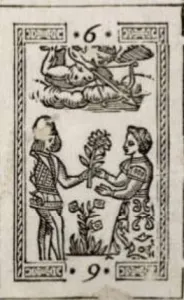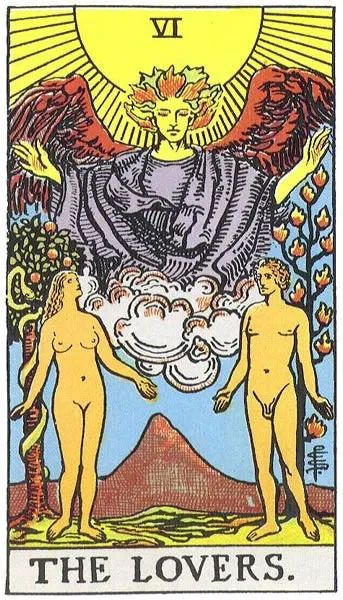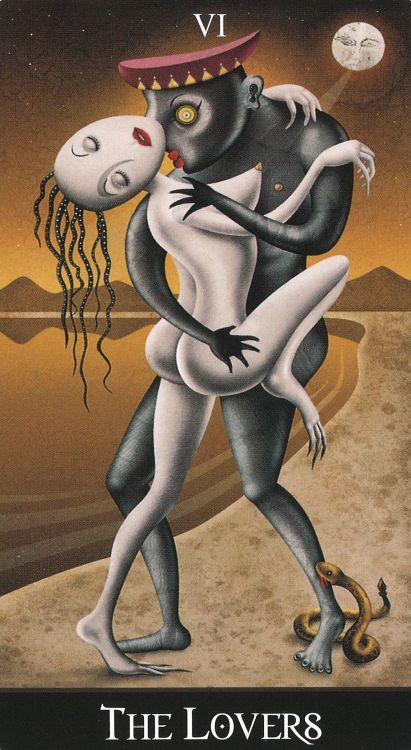

Cupid, this Roman mythological figure, embodies love in its most divine and conquering form. Through the ages, he has been depicted in multiple ways, each revealing different facets of this universal feeling. Take, for example, the 1793 work by Antonio Canova, “Psyche revived by love's kiss” where Cupid is seen placing a kiss on Psyche, symbolizing the triumph of divine love over mortal.
In this representation, Cupid's wings are not just a simple addition; they illustrate his celestial nature, while Psyche's nudity evokes the vulnerability of the human soul. Another painting, “The Blindness of Cupid” by Bronzino, dating from 1545, shows a blindfolded Cupid, a powerful metaphor for love that does not see flaws, that loves without judgment.
Lorenzo Lotto's painting, “Cupid Unfastening the Belt of Venus” (1565), presents Cupid freeing Venus from her belt, a symbolic act of the power of love over beauty. Venus, in turn, is the personification of love and beauty, and in these works, Cupid is often depicted as a child or young man, highlighting the innocence and lightness of love.
His attributes, the bow and arrow, are not just simple weapons but metaphorical tools, illustrating love's ability to touch and transform the heart. The presence of Psyche reinforces this idea, representing the human soul touched by divine love, while Venus reinforces the themes of love, desire, and the union between celestial and earthly realms.
In the Charles VI tarot, created in Florence around 1460, "L'Amoureux" card presents an aristocratic wedding scene with three couples, one of whom seems deeply in love. Above them, not one, but two Cupids float on a cloud, highlighting the duality and complexity of love.
Unlike the cherubs of the late Renaissance, Cupid is depicted as a classical young man, reflecting a more mature vision of love.
The famous myth of Hercules evokes the dilemma where the hero must choose between the path of ease and that of glory. Hannibal Carracci's painting, “Hercules at the Crossroads” painted in 1596, perfectly embodies this theme. We see Hercules, sitting between two women: one, voluptuous, invites him to a life of ephemeral pleasures; the other, modestly dressed, shows him the arduous path leading to eternal glory.
This allegory, already present in Socrates, has traversed the ages to reach us, reminding us that choice is not only a matter of the heart but also of destiny. The Tarot of Marseille, with its central figure of man, emphasizes the importance of this choice, inviting us to reflect.
We can also talk about the other myth of the Judgment of Paris, where the Trojan prince Paris must choose between three goddesses, each promising him different rewards. This mythological story is a striking parallel to "L'Amoureux" card, where the choice is not only romantic but also moral and spiritual. The angel or Cupid, often present in religious art as a messenger of divine will, reinforces this spiritual dimension, suggesting that our choices are guided by forces greater than ourselves.
The first mention of this card dates back to the Visconti tarot, created in 1441 to celebrate the marriage of Bianca Maria Visconti and Francesco Sforza. On this card, the heraldry of the two families is depicted, testifying to the political and military union of the time.
A small white dog, a symbol of marital fidelity, and the word “love” discreetly inscribed on the canopy, remind us that despite political arrangements, idealized love had its place in the collective imagination. The aristocrats of the time, perhaps to escape the less romantic reality of their arranged marriages, adored the stories of Lancelot and Guinevere, the Romance of the Rose, and the songs of the troubadours.
The art of this period, including tarot cards, reflected this fascination with romance, depicting wedding parades imbued with idealism. In the Visconti-Sforza tarot, "L'Amoureux" card presented a couple under the benevolent gaze of a Cupid or an angel, ready to shoot his arrow, symbolizing romantic love in its purest form. This celestial figure symbolizes divine intervention, love, and the inevitable choices made under the influence of higher powers.
In the Rosenwald Tarot, Cupid seems to point his arrow at the woman who is most receptive to the man's advances, which can be interpreted as the power of love and desire to shape our decisions. This highlights the idea that, although we may face difficult choices, it is often attraction and affection that tip the balance.
With the Anonymous Paris Tarot, there is a break since the card shows a rather mature couple and Cupid directs his arrow more towards the man. This card thus illustrates how later the Marseille Tarot will diverge from Italian tarots because Cupid's target is no longer the woman but the man. Thus, the title of the card, "L'Amoureux", shows that the man depicted on the card becomes the most important figure.
Appearing in the 17th century, this card no longer represents a couple of courtiers but a trio, with a young man in the center, hesitating between two women who attract him in opposite directions.
The young woman, adorned with flowers, embodies beauty and novelty, while the older woman, crowned with laurel, symbolizes wisdom and experience. This duality reflects the choice between two life paths: one towards adventure and discovery, the other towards stability and knowledge.
In the early versions known as “type I” of the Marseille Tarot, Cupid is depicted blindfolded, suggesting that love is blind, guided by forces we do not always control. Later, in the versions known as “type II,” Cupid has open eyes, indicating awareness and a clear vision of the consequences of our romantic choices.
This evolution in the representation of Cupid could be interpreted as a passage from the Fool's journey, where the lover, initially guided by impulses, becomes a triumphant military hero in the Chariot card.
The Marseille Tarot stands out by highlighting the man as the central figure, emphasizing the importance of choice in the romantic context. This representation echoes classic themes such as the Judgment of Paris or the choice of Hercules, where heroes must decide between options that will define their destiny.
Waite has a decidedly different approach for his Lovers card, speaking of Christian mysticism. This card, rich in Christian, astrological, and Kabbalistic elements, depicts Adam and Eve in the Garden of Eden, symbolizing the origins of human love.
Adam, placed in front of the Tree of Life, is surrounded by flaming fruits, while Eve stands near the Tree of Knowledge, with a serpent and apples by her side. This scene illustrates love in its most innocent and spiritual form, before material desire corrupts it.
The angel, not identified by Waite but later associated with Raphael by initiates of the Golden Dawn, spreads his blessings, symbolizing the balance between masculine and feminine polarities. This winged figure embodies the divine influence that permeates human love.
Tarot readers who integrate psychology into their readings might see in the three characters the trinity of the mind: conscious, unconscious, and superconscious. Adam and Eve, in their state of original purity, reflect spiritual love before it is altered by earthly temptations.
Adam, as the embodiment of the conscious and rational mind, turns towards Eve, who connects with the superconscious realm, represented by the angel. This dynamic illustrates the connection between the human and the divine, where love is seen as a bridge to higher consciousness.
Beyond the biblical representation, Waite's Lovers card invites us to reflect on the duality of love: between innocence and experience, between spirituality and desire.
In the interpretation of the Mad House Tarot, the Lovers card stands out with its enigmatic symbols. After consulting the booklet accompanying the deck, I find that the author leaves much to personal interpretation and does not explain his choices regarding the addition of certain elements.
The partially undressed woman seems to embody seduction, while the other, masked and holding a rope, oscillates between liberation and constraint.
The winged balloon and the straitjacket are key elements of this card. The straitjacket, restricting movement, illustrates the man's fixed position, symbolizing a difficult choice and constrained freedom. This image echoes that of the Hanged Man, where the man is also in a position of observation, suspended between two states.
The balloon, on the other hand, draws the man's gaze to the sky, suggesting a quest for spiritual elevation or hope. However, the reality of his situation, symbolized by the straitjacket, prevents him from reaching this desire for ascension.
The balloon, adorned with an emotive smile, can be interpreted as a mockery of the human quest, floating freely but capable of bursting at any moment, thus revealing the ephemeral and illusory nature of desires. This balloon replaces Cupid, evoking the childish representation of the god of love, often depicted as a cherub, and highlighting the fragile and deceptive nature of desire and choice.
I find that this Lovers card in the Mad House Tarot invites us to reflect on the complexity of romantic choices and the contradiction between our hopes and the constraints of reality. It symbolizes the choice between illusion and truth, between what is pleasing in the short term and what is beneficial in the long term.
In the Sasuraibito Tarot, the Lovers card is a visual enigma, where abstraction meets symbolic depth. It shows two human silhouettes, enveloped in clouds of ambiguous hues, uniting in a transcendental fusion for better or for worse.
This union, at the heart of the "L'Amoureux" card, reflects a deep desire for connection, not only with another but also with the world. It is a quest for harmony and completeness that drives us to make choices, open ourselves to new experiences, and bond with others.
Although this representation may seem simple, it recalls the very essence of the "L'Amoureux" : the will to unite. This aspect is sometimes forgotten in modern tarot interpretations, where the focus is on the dilemma of choice rather than the fusion of souls.
This union of two bodies speaks of desire, passion, harmony, pleasure, sexuality, and connection. Communication is crucial for this card, which represents the ultimate union.
This card reminds us of the power of our choices and the importance of taking actions that make us whole, as well as the value of those who complete us. Lovers, friends, adversaries – each teaches and brings us something. This card emphasizes that we need others to become fully human and that we do not exist if we isolate ourselves.
In the Deviant Moon Tarot, the Lovers card reconnects with traditional representations by depicting a male-female couple. This card introduces a dynamic of union of opposites, illustrated by the woman's white skin and the man's black skin, symbolizing the harmony of opposites.
This union could be confused with the harmonization of opposites evoked by the Temperance card. The presence of the serpent recalls the biblical myth of the choice between vice and virtue, but here, the choice seems to be made in an assumed manner. The moon, blowing a luminous ray towards the couple, emphasizes the inner dimension of the choice, suggesting that the most important consequences are those that affect our inner self.
The scene takes place on a beach, and the woman, with an aquatic appearance, could be perceived as a mermaid emerging from the depths of the ocean. This image reinforces the idea that the choices we make are rooted in our psyche, perhaps even touching the unconscious. The card suggests that true union is with our own inner self, accepting the depths of our being.
Although this interpretation is rich, it could bring us back to the message conveyed by the Moon card, which also deals with hidden aspects and the unconscious.

Key words for the 78 cards for the Tarot of Marseille and the Rider-Waite-Smith, to slip into your favorite deck. Your leaflets always with you, at hand, to guide you in your readings. Thanks to them, your interpretations gain in richness and subtlety.
As mentioned earlier, the card can be associated with the choice between vice and virtue. However, I think such a reductive view does not do justice to the depth of this card. Indeed, if we observe the card closely, we notice that the man in the center, holding his belt, symbolizes self-awareness and a certain maturity. He presents himself as an experienced man, ready to unite with the world, aware of his identity and his place in the universe.
This card logically follows the Emperor and the Pope in the Fool's journey, suggesting a progression towards self-assurance and self-knowledge. The man holds his belt, not only to affirm his posture but also to express his desire to unite with the world. This attitude is paradoxical, because although he demonstrates a certain maturity, his bare legs reveal a certain inexperience, a naivety in the face of life's path.
Before him, two women: one pleasant, the other seductive, perhaps represent the choice between spirituality and earthly life. But contrary to what one might think, the card does not illustrate a choice between spirituality and sexuality, nor between virtue and vice. It rather embodies the choice of the heart, which explains why it is named “L'Amoureux” The real dilemma posed by this card is not a dichotomous choice or between two opposing options, but an intimate choice: whether or not to follow the impulses of our heart. The answer to this question is less a matter of “option A or option B” than of whether or not to follow the inner voice that guides our most sincere feelings.
| Symbolic interpretation | Right direction (Positive) | Free will, decision, choice, desire, aspiration, resolution, encounter, connection, exchange, partnership, love | Reverse direction (Negative) | Dilemma, rivalry, temptation, illusion, doubt, questioning, libertinism |
| Psychological interpretation | Right direction (Positive) | Decisive, clear-sighted, foresighted, cautious, open | Reverse direction (Negative) | Indecisive, hesitant, confused, torn, destabilized, unfaithful, cowardly, irresponsible |
| Advice | |
| Take the time to evaluate the situation. Then decide your priority: Listen to your reason or your heart. Follow your intuition. Listen to your inner voice. Have confidence but stay cautious. Finally, make your decision | |
| Thematic Interpretation | Love | First hours of love. Third person causing trouble. Heart dilemma. Emotional attachment | Work | Difficult career choice. Uncertain strategy. Association to consider. Double job. Part-time | Money | Uncertain investment. Dilemma between selling or keeping shares | Family / Friendships | Emotional complexity. Difficult separation from the family nest. Tensions or necessary arbitration between siblings or parents | Health | Therapeutic choices to decide. Emotional and affective life impacting health. Inner confusion or hesitation |
| Divination / Prediction | Who ? | Yourself between 2 people. A man or woman in love. A person in a dilemma | Where ? | At the crossroads. On the train platform. In a waiting room | When ? | When signing a form. Before making a call. At night in bed | How ? | By listening to your reason. By listening to your heart. By deciding. By jumping into the unknown |


















Copyright © TarotQuest.fr